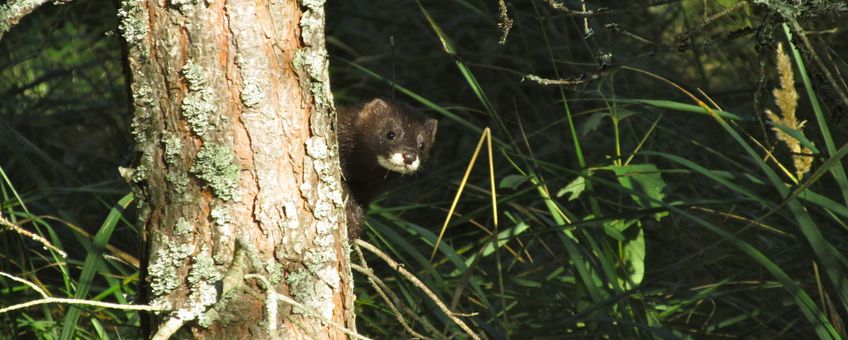
To boldly go: bolder mink are more likely to survive after reintroduction
Stockholm UniversityTo restore the natural population in Estonia, European mink are bred in captivity for reintroduction. After a potential reintroduction habitat has been deemed suitable, with enough prey and hiding places, individuals are released back into the wild. Unfortunately, survival probability turns out to be very low for these animals due to high levels of predation. Movement patterns, generations in captivity, release method and age could all not explain this high mortality rate.
Personality traits are found in many animal species, ranging from insects to hyenas. Meaning that individuals within one population or group behave consistently different while they are in similar situations. For example, some individuals immediately go exploring when they are confronted with a new environment, while others just stay put. Also mink have specific personality traits in which individuals differ from each other: boldness, exploration and sociability.
In this study, led by Marianne Haage, personality-tested animals were fitted with radio-collars so that the researchers could radio-track them for 60 days after a relocation. To ensure that there were no problems with the collars, the animals were kept at the breeding facility for at least 2 days before release. After this period, the researchers released the animals on two different islands in two different years. One island had no European mink present and the other contained a small, but not yet viable, population which originated from previous releases.
Just after release in 2012, nine out of the 10 animals died, with a mean survival time of 15 days, and one animal was lost. In contrast, in 2013 only three out of 15 animals died and four animals were lost. At least seven individuals survived the full tracking period. Almost all deaths were caused by predation.
Interestingly, the boldest individuals showed the highest probability of survival in both 2012 and 2013. The story for exploration behaviour was however more complicated. Highly exploratory individuals were more likely to survive in 2013, but they were also more likely to die earlier in 2012. Finally, survival was not in any way related to how social the individuals were, which was not too surprising since mink are overall solitary animals. In conclusion, to increase the survival chances of a species after reintroduction, it might thus be relevant to also consider the personality traits of the animals in question.
The findings are published open access in the scientific journal Oecologia.
Text: Marianne Haage, Stockholm University; Lysanne Snijders, Nature Today
Photos: Carla García Bustos; Marianne Haage, Stockholm University

